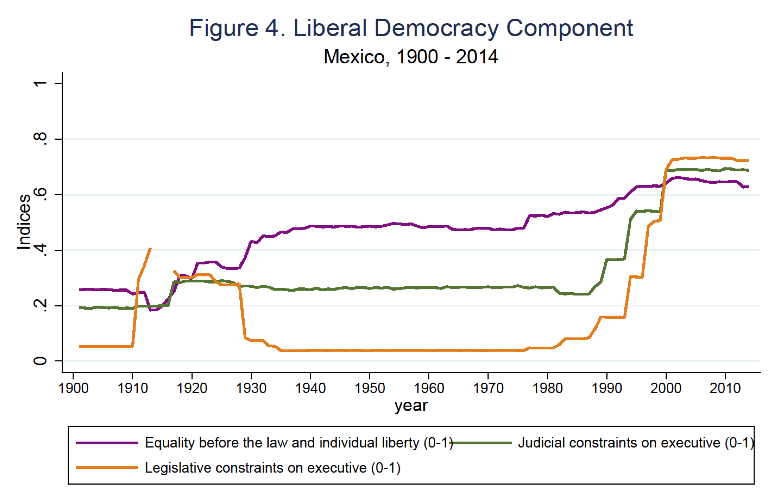Liberal democracy Mexico
By: V-Dem Staff
Sep 02, 2015
The ability of the legislature to constrain the executive, is very limited before the 1910 revolution, as reflected by the low score of the index during this period. Between 1913 and 1917 the Mexican legislature is closed down as reflected in the missing data for the index during this period.
After its restoration in 1917, the constraints posed by the Congress of the Union decreases and falls to very low levels. Over the next 60 years, the extent to which the Congress and other government agencies are able to question, investigate and exercise oversight over the executive is indeed very limited. Their power, however, increases dramatically during the 1990s and reaching a high score of .8 in period since 2000.
The ability for the judiciary to constrain the executive is also very weak throughout most of the 20th century. In the 1990s this improves as both executive compliance with the constitution and judicial autonomy increases. In 2014, the country scores a .7 on the index.
The equality before the law and individual liberty index measures to what extent laws are transparent and rigorously enforced, as well as the extent to which the public administration is impartial. It also captures the degree to which citizens enjoy access to justice, secure property rights, freedom from forced labor, freedom of movement, physical integrity rights, and freedom of religion. The individual freedoms and the equality before the law improve with the adoption of the constitution of 1917. After that a gradual increase until the 2000s takes place where the score remain stable around .6.


